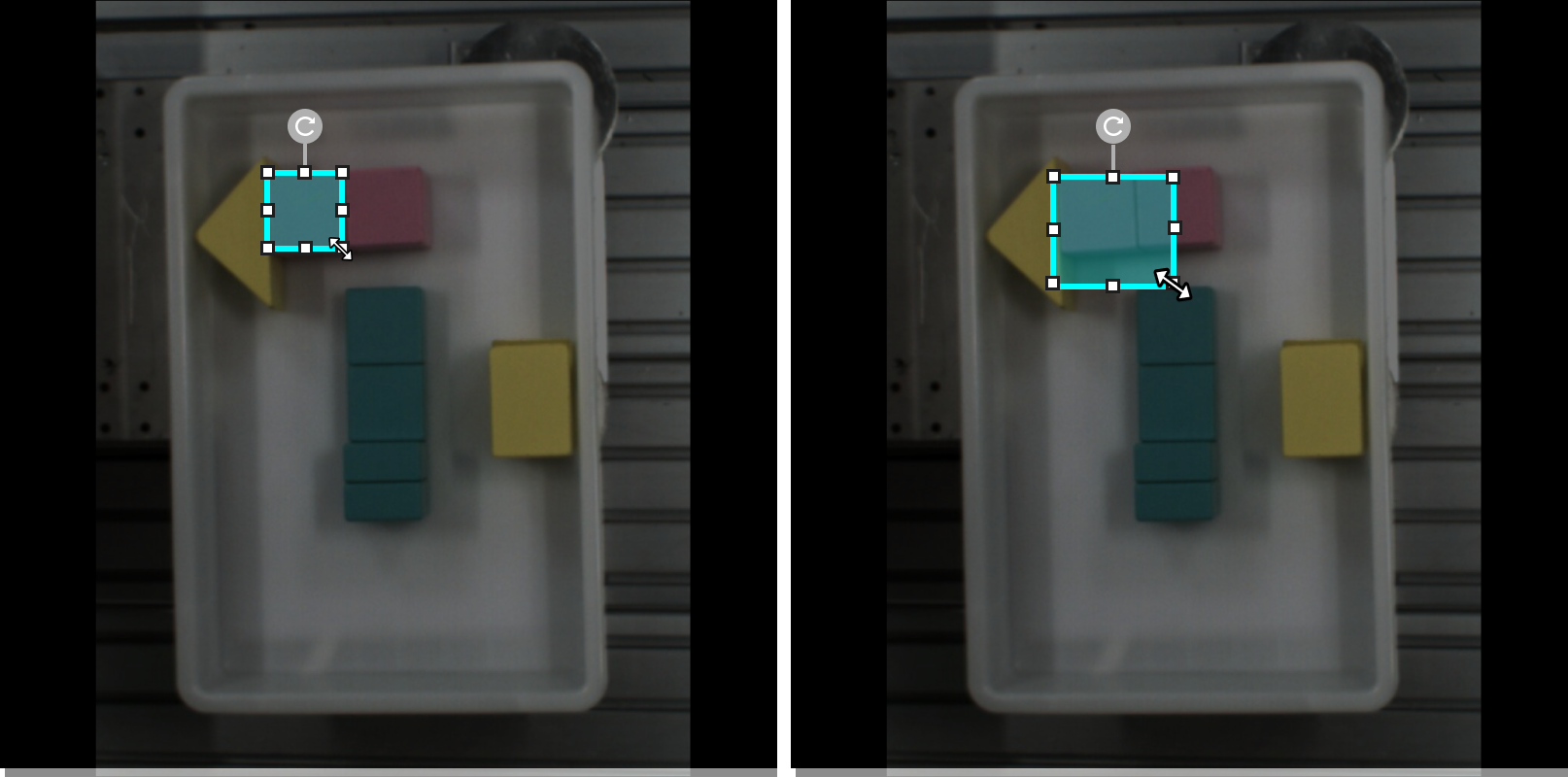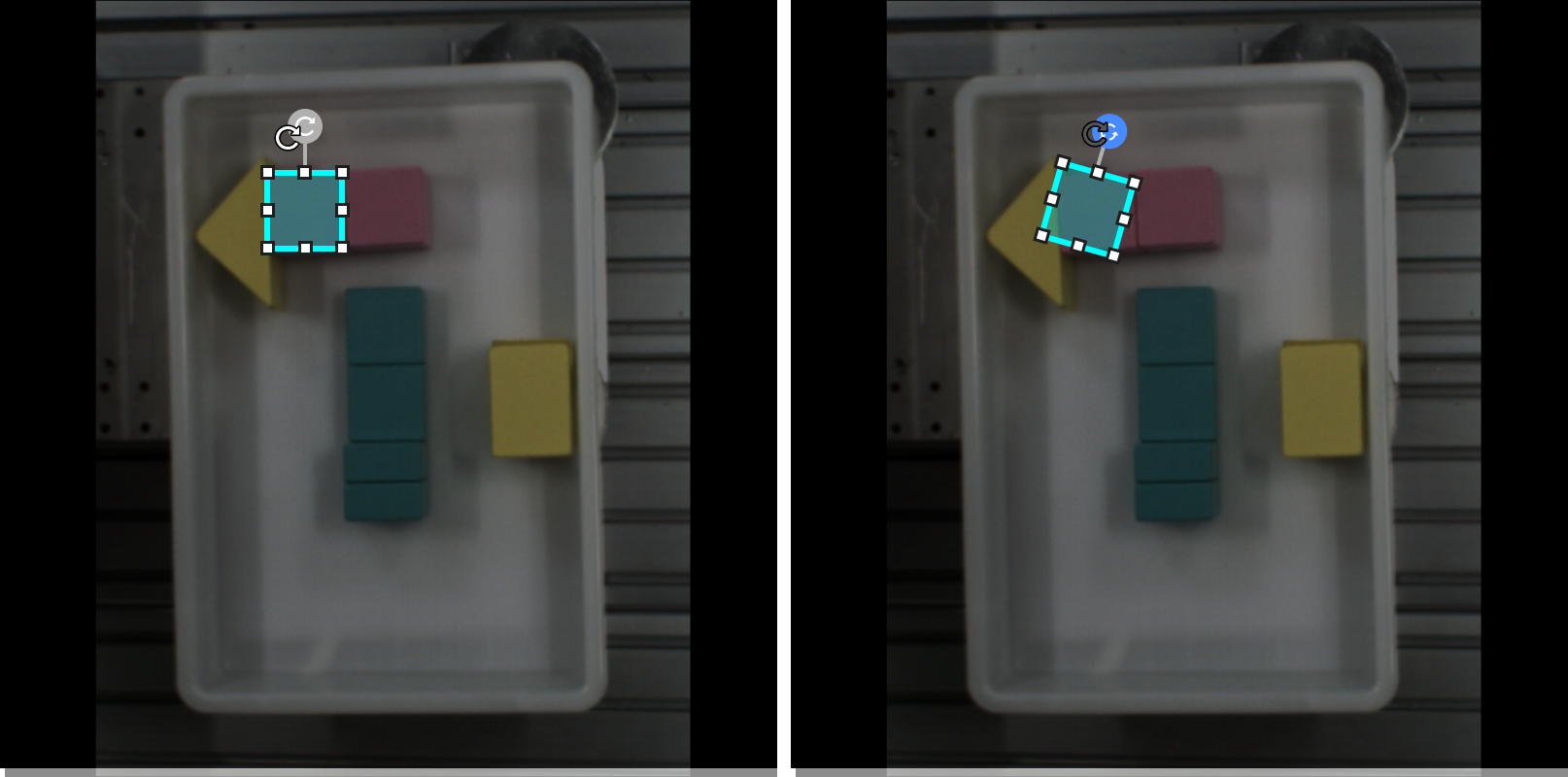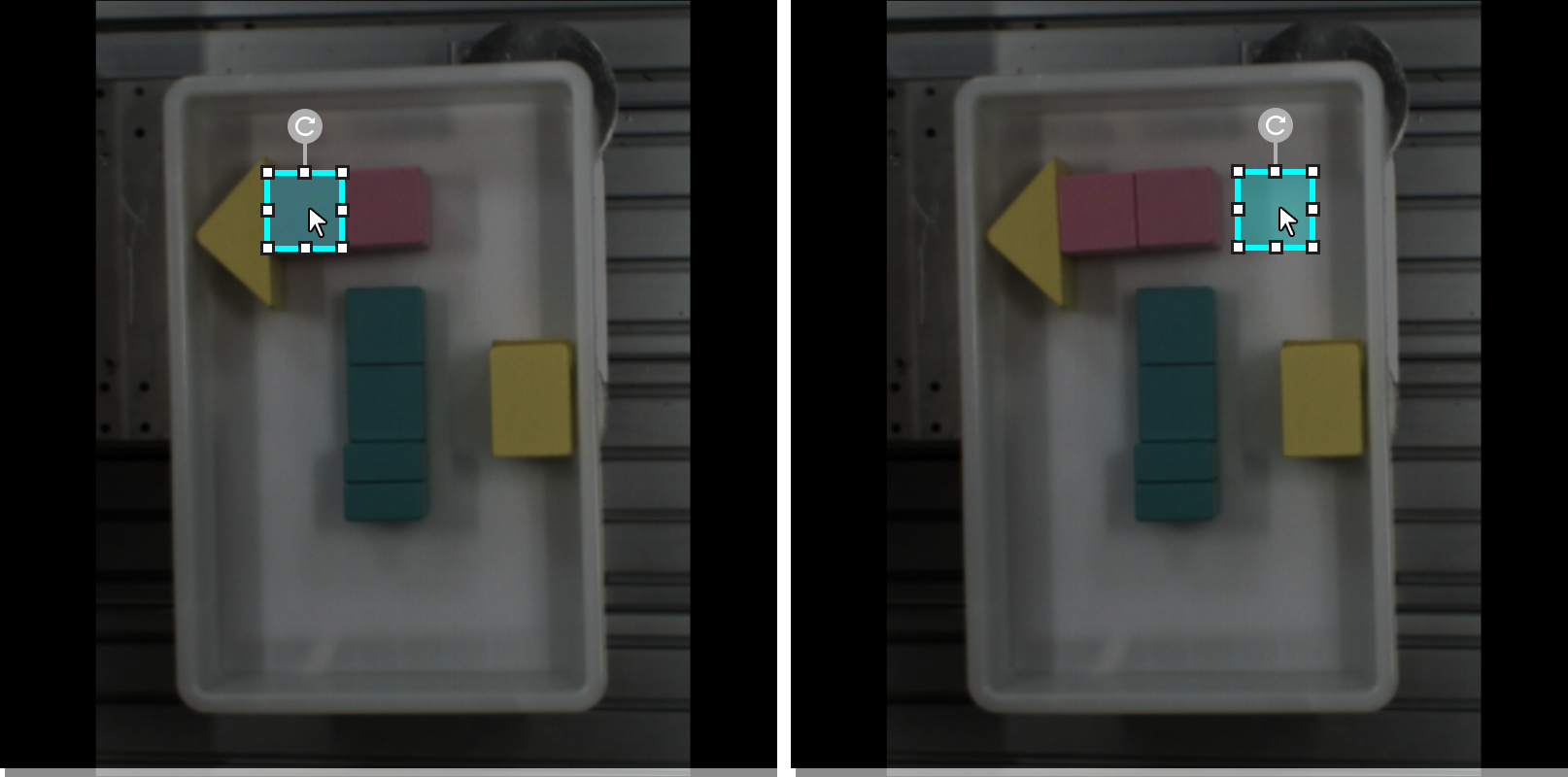Introduction to Labeling Tools
Polygon Tool
The Polygon Tool can draw polygon labels with more vertices, which is suitable for objects of complex shapes.
-
Click
 (or press P on the keyboard).
(or press P on the keyboard). -
Click the first position (vertex) in the selection region, then click the second one, third one, etc., to draw the labels, and right-click to finish. (At least three vertices are required.)
-
If multiple label classes are created, colors corresponding to different label classes should be selected.
After labeling, use the Select Tool to select a label and adjust the label by the following methods.
-
Click the label edges to increase the number of vertices.
-
Right-click a vertex to delete it.
-
Long press the left mouse button and drag the vertex in any direction to modify the label shape.
Rectangle Tool
The Rectangle Tool can be used to draw rectangular labels, which is suitable for rectangular objects.
-
Right-click
 and then click
and then click  (or press R on the keyboard).
(or press R on the keyboard). -
Long press the left mouse button in the selection region, move it in any direction, and then release the left mouse button to finish the rectangular selection.
-
If multiple label classes are created, colors corresponding to different label classes should be selected.
Free Rectangle Tool
The Free Rectangle Tool can be used to draw a rectangle around the text area. Therefore, it is recommended to select this tool for rectangular text areas.
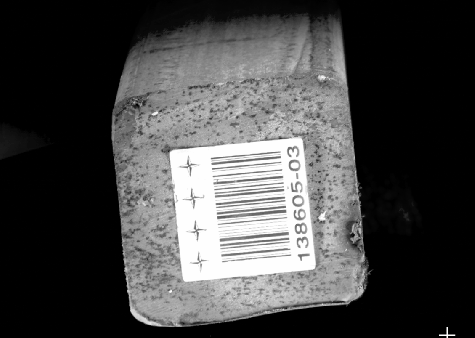
-
Click
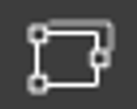 (or press K on the keyboard).
(or press K on the keyboard). -
Move the crosshair cursor in the selection region and left-click to select the starting point of the area you want to outline. Then, move the cursor and left-click again to select the second point to define the range you want to outline. At this point, a straight line will be created, forming one side of the rectangular selection frame.
-
Moving the cursor to either side of the straight line will allow you to create a rectangle. Click the left mouse button to complete the labeling.
| During the process, you can click the right mouse button to cancel the labeling. |
Pre-trained Labeling Tool
After you validate a model, you can import new image data to the current module and use the pre-trained labeling feature to perform auto-labeling based on this model.
| The pre-trained labeling feature is available only when the current module contains validated models. |
The Pre-trained Labeling Tool can be used only on the following three types of data:
-
Unlabeled data
-
Automatically labeled data (images with a yellow triangle at the front of the image number)
|
|
The pre-trained labeling feature can outstandingly reduce the cost of manual labeling. However, the accuracy of the results depends on the model that you use. We recommend that you train a high precision model before you use the pre-trained labeling feature. |
You can use the Pre-trained Labeling Tool in one of the following three methods.
-
Method 1: Pre-trained labeling button
-
On the upper part of the image list, click the Pre-trained labeling button. All images in the image list will be labeled by using the Pre-trained Labeling Tool.
-
After the labeling process is finished, you can view a yellow triangle in the upper left corner of the sequence number of the labeled images.
-
-
Method 2: Pre-trained labeling option
-
In the image list, select one or more images that you need to label.
-
Right-click the images and select Pre-trained labeling, the labeling process starts. After the labeling process is finished, you can view a yellow triangle in the upper left corner of the sequence number of the labeled images.
-
-
Method 3: Pre-trained Labeling Tool
-
In the labeling toolbar, right-click
 , then click
, then click  (or press D on the keyboard) to select the Pre-trained Labeling Tool.
(or press D on the keyboard) to select the Pre-trained Labeling Tool. -
On the upper part of the image, click Start labeling, and the Pre-trained Labeling Tool will start to label the image. After the labeling process is finished, you can view a yellow triangle in the upper left corner of the sequence number of the image.
-
|
VFM Labeling Tool
Mech-DLK incorporates the visual foundation models (VFMs) developed by Mech-Mind. You can use the VFM Labeling Tool powered by the visual foundation models to quickly label datasets.
The VFM Labeling Tool can be used only on the following three types of data:
-
Unlabeled data
-
Automatically labeled data (images with a yellow triangle at the front of the image number)
|
You can use the VFM Labeling Tool in one of the following three methods.
-
Method 1: VFM labeling button
-
On the upper part of the image list, click the VFM labeling button. All images in the image list will be VFM-labeled.
-
After the labeling process is finished, you can view a yellow triangle in the upper left corner of the sequence number of the labeled images.
-
-
Method 2: VFM labeling option
-
In the image list, select one or more images that you need to label.
-
Right-click the images and select VFM labeling, the labeling process starts. After the labeling process is finished, you can view a yellow triangle in the upper left corner of the sequence number of the labeled images.
-
-
Method 3: VFM Labeling Tool
-
In the labeling toolbar, right-click
 , then click
, then click  (or press S on the keyboard) to select the VFM Labeling Tool.
(or press S on the keyboard) to select the VFM Labeling Tool. -
On the upper part of the image, click Start labeling, and the VFM Labeling Tool will start to label the image. After the labeling process is finished, you can view a yellow triangle in the upper left corner of the sequence number of the image.
-
After the labeling is completed, Mech-DLK will generate a label class named "model_label" for the labels created by the visual foundation models.
If you want to modify VFM Labeling Settings, please follow those steps:
-
Right-click on
 and select VFM Labeling Tool.
and select VFM Labeling Tool. -
Click
 on the upper area of the labeling area.
on the upper area of the labeling area. -
In the window of VFM Labeling Settings, you can modify the VFM labeling results.
Template Tool
You can use the Template Tool to set an existing selection as a template. After setting, you can use this template to rapidly label contours and objects with the same pose.
It is suitable for scenarios where there are multiple neatly arranged objects of the same type in an image, which can improve labeling efficiency.
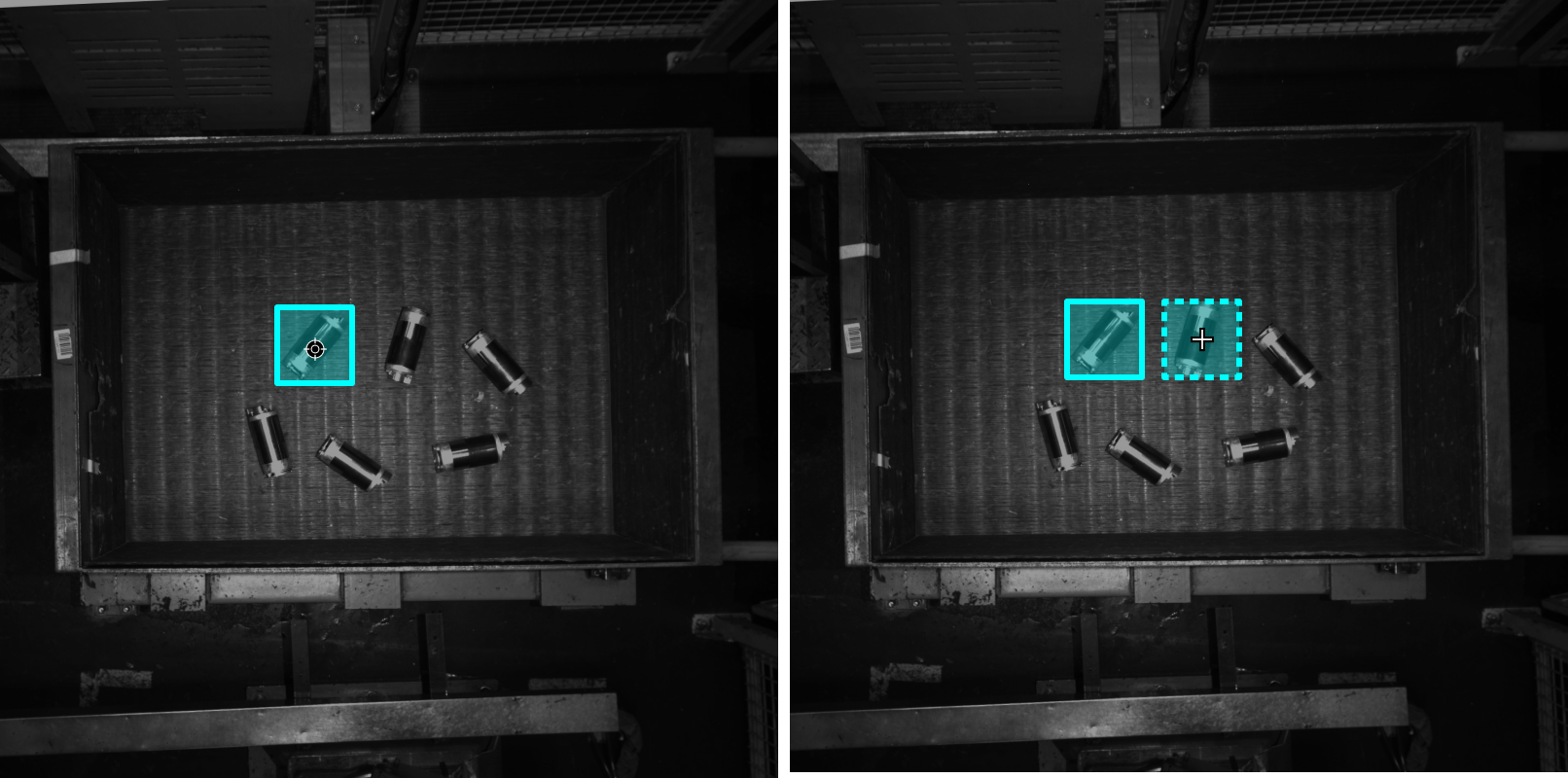
-
Click
 (or press C on the keyboard).
(or press C on the keyboard). -
Click the region that needs to be set as the template.
-
Move the template to the object that you need to select, adjust the angle of the template to make it fit the object, and then click it.
-
Coarse adjustment: Press and hold the Shift key and then scroll the mouse wheel.
-
Fine adjustment: Adjust the Rotation angle parameter.
-
| During labeling, press and hold the Ctrl key and click the selection to switch the template. You can also click Replace template and then click the selection to achieve the same purpose. |
Mask Tool
If there are some irrelevant parts that may interfere with model training/inference, you can use the Mask Tool to cover such parts. The masked parts will not be involved in training/inference.
You can choose among the following three mask tools built in the software according to actual needs.
Mask Polygon Tool
-
Click
 (or press Shift + P on the keyboard)
(or press Shift + P on the keyboard) -
Set “Fill” for the mask.
-
Click the first position (vertex) in the selection area, then click the second one, third one, etc., to draw the labels, and right-click to finish.
Mask Eraser Tool
The Mask Eraser Tool can be used to erase the masks.
-
Click
 (or press Shift + E on the keyboard)
(or press Shift + E on the keyboard) -
Long press the left mouse button in the selection area and move in any direction.
Adjust the slider to change the eraser size.
Grid Cutting Tool
In industrial inspection scenarios, if the size of images captured by the camera is large, smaller defects may be inconspicuous. If training in such a case is performed, defects are difficult to detect. You can use the Grid Cutting Tool to cut the large images into cell images of the same size according to the set dimension. Defect labeling should be completed for all images before the application of this tool.
-
Click
 (or press U on the keyboard).
(or press U on the keyboard). -
Set Rows and Columns and then click Apply.
-
Place the cursor in the parameter boxes and then scroll the mouse wheel.
-
Enter values in the parameter boxes.
Note that the number of rows and columns should not be too large, or else the number of cell images after cutting is great, which slows down subsequent inference.
-
|
The Grid Cutting Tool supported Edge Expansion. Edge expansion refers to extending the green division line used by the Grid Cutting Tool into two yellow division lines on both sides. The green division line may cut through defects or texts in the image, while the extended yellow division lines ensure that the defects or texts in the image remain intact. |
Grid Selection Tool
Right-click ![]() and then click
and then click ![]() (or press I on the keyboard) to open the Grid Selection Tool. By default, the cell images with defect(or text) labels are checked, which will be added into the training/validation set. You can select cell images with and without defects(or texts) on demand.
Click the Preview button in the upper right corner of the selected image to preview the cell images.
(or press I on the keyboard) to open the Grid Selection Tool. By default, the cell images with defect(or text) labels are checked, which will be added into the training/validation set. You can select cell images with and without defects(or texts) on demand.
Click the Preview button in the upper right corner of the selected image to preview the cell images.
-
Select: Select all the cell images containing defects(or texts) to put into the training/validation set.
-
Select all: Select all the produced cell images into the training/validation set, and set those containing no defects (or texts) to OK.
-
Clear selection: Clear the selections on cell images.
ROI Tool
You can use the ROI Tool to set the region of interest.
Setting the ROI can avoid interferences from the background.
-
Click
 (or press O on the keyboard).
(or press O on the keyboard). -
Adjust the ROI frame in the selection region.
-
Click the
 button in the lower right corner of the ROI to save the setting, or click the
button in the lower right corner of the ROI to save the setting, or click the  button to disable the ROI Tool.
button to disable the ROI Tool. -
Click the Reset button in the upper left corner of the image to reset the ROI.
Select Tool
You can use the Select Tool to select, move, and adjust the selections.
-
Click
 (or press F on the keyboard).
(or press F on the keyboard). -
Move the cursor in the selection region and then click the selection to be processed.
|
Adjust size |
|
Rotation |
|
Move |
|
